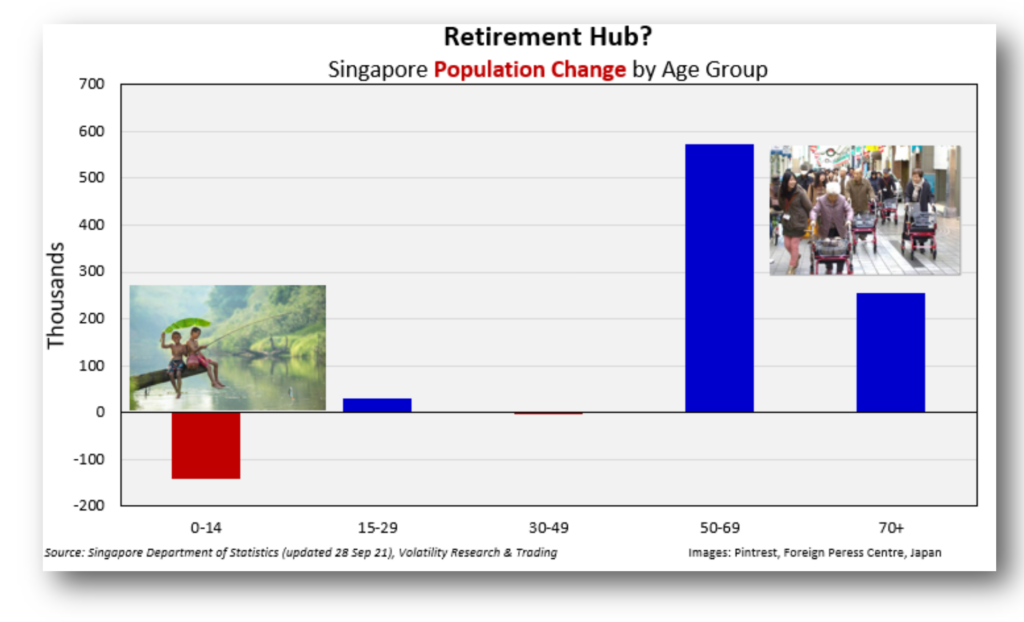by David G Munro & Claudia Zeisberger
Singapore has proactively shaped its destiny for decades by finding its groove one hub at a time; first a port hub, then an oil refining hub, followed by an air hub and then financial, FinTech, infrastructure and sports hubs. Looks like a green hub is in the works and hopefully this effort outshines its newfound status as a Covid hub.
Odd then that such proactive, technically efficient, and carefully planned efforts to define the country’s destiny have missed on the population front – the one metric that truly defines destiny.
Over the last two decades, the zero to14 year old population has dropped by 140 thousand, while the 50 and over cohort has ballooned by 828 thousand. At the turn of the century, both groups represented 21% of the resident population. The youth now make up just 14% of the population while the geezers are at 38% and rising.
The Straits times reports that 68 schools have been merged since 2010 and another 18 primary and secondary schools are set to be merged over the next three years, citing the lower birth rate as the primary driver.

Singapore’s founding father, Lee Kuan Yew, knew population management wasn’t easy and warned that declining fertility was the biggest threat to Singapore’s survival. He also admitted “I cannot solve the problem, and I have given up. I have given the job to another generation of leaders. Hopefully they or their successors will eventually find a way out.” To date, they haven’t.
They’ve tried to encourage increased fertility, even though it is well understood that fertility falls in line with urbanization (Singapore’s population doubled from 2.8 to 5.6 million in 30 years; most large Asian cities have a fertility rate of less than 1.0), cost of living (the most expensive city in the world in 2019) and the number of females with higher education (Singapore has more female tertiary education graduates than male). Higher fertility is not a realistic proposition unless Singapore can create a countryside and engineer deflation.
There is a fork in the road and two paths present themselves; go the way of Monaco and become a retirement hub for elderly and wealthy tax minimizers (median age over 55 years) and continue to close the schools, or encourage both young families that seek a warm, efficient and low crime environment and regional youth in search of a great education to put down roots.
Due to its compact size, Singapore is the only Asian country that can realistically manage the composition of their age-specific population. The upside of replenishing the youth demographic would be vibrancy, vitality, ideas, enthusiasm, playfulness and a vigor that the founding fathers of Singapore once knew well.
Which path should Singapore take?





